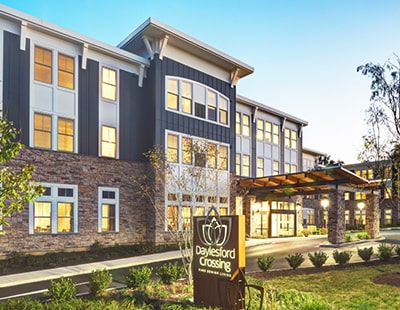However, investors are now looking at residential in a new light and recognising it as an asset class that can deliver institutional grade returns. One reason for this is that residential property can be less susceptible to fluctuations in the market and has a strong underpinning in terms of capital value – driven by a shortage of homes and that, ultimately, people will always need somewhere to live.
UK commercial real estate has taken a bit of a battering thanks to Covid - why would investors consider it over residential?
UK commercial real estate continues to play a key role for investors. The industrial and logistics asset classes, in particular, have the potential to deliver enhanced returns. Data from MSCI shows the industrial sector delivering 6.6% rental value growth in the year to October 2021, with a record annualised capital value growth of 25.3%.
The commercial office market must not be written off either. Though the impact of Covid-19 cannot be ignored, the sector should be seen as in a state of flux, rather than yesterday’s news.
Employees are using offices differently. This leads to the question - do businesses need less space or different types of space? There is a strong argument for the latter, with firms looking at reconfiguring their space and creating a working environment that promotes collaboration and socialisation between employees. Some businesses may even need to take on more office space, especially as staff are now used to a larger personal space following social distancing restrictions.
Investors should take confidence from the letting evidence seen across the UK – showing that most businesses and employees do still need, and want, an office. Shoosmiths is proof of that. We recently opened a new office in the heart of Glasgow’s innovation district - leasing c.5,000 sq ft of space, with an aim to continue growing our team and service offering here.
How can investors unlock value from the residential sector through asset classes like senior living and the wider Build to Rent sector?
The growth of senior living as an attractive asset class is driven primarily by two factors. Firstly, there is a clear shortage of these types of properties. According to Knight Frank, at the end of 2020, there was a supply of 78,383 homes equipped with care units in the UK. This compares to a total population of over 65s of 12.4 million. The same gap is present in retirement housing, which even with a predicted 10% growth in stock, is only expected to total over 800,000 homes by 2024.
The second factor is the diversification of senior living. The market is made up of multiple housing and care models, including luxury senior living developments for those over a certain age, retirement homes, housing with extra care facilities and traditional care homes.
The different senior living models create new opportunities for investors that can not only tap into real estate returns, but also those associated with the facilities and services provided. This broadening out of potential value can also be seen in the build-to-rent sector, with investors able to access separate income generators from extra resident facilities such as a concierge or gym.
Both of these asset classes are underpinned by capital value growth and the long-term returns that can be realised should an investor choose to break up and sell parts of their portfolio.
Are there still good opportunities in traditional buy-to-let, or would investors looking for long-term yields be better off seeking alternatives?
The market is moving on from the traditional buy-to-let model. The entrance of institutional investors means that individual private landlords are competing against organisations with the scale and resources to offer a different level of service to residents.”
What represents a good yield for investors at the moment? And where in the country are they most likely to find it?
Yields are led entirely by location and asset type. The most successful investors understand this and adopt a flexible approach to building their portfolio.
Avison Young’s research demonstrates the varied growth across UK property. Leeds is seeing the highest demand of the ‘Big Nine’ office markets in 2021, while Birmingham’s city centre and out-of-town markets performed strongly in Q3 2021, with office space take-up totalling 376,000 sq ft - 41% above the 10-year quarterly average. Elsewhere, the East Midlands has continued its dominance of the warehouse market, with a record 9.3m sq ft of space transacted in the first half of 2021.
We are seeing an influx of investment in UK real estate. With a restricted supply of certain stock, including residential, this is making for a competitive market. As a result, yields are tightening. Investors that are taking on more risk in the search for yield must ensure they are carrying out proper assessment and due diligence on an asset and the covenant underpinning its income.
Are investors too focused on the yield? Aren't there other ways of measuring whether an investment is worthy or not?
Environmental, social and corporate governance (ESG) is at the absolute front of people’s thinking in the UK real estate sector. This applies to developers that are creating product, as well as corporate and residential occupiers, which are now increasingly prioritising ESG in their property decisions – whether this be the sustainability credentials of a building or how rents are managed, for example.
In today’s market, it is critical that investors target property assets that incorporate ESG. This will help bolster yields and long-term capital value resilience. The desired outcome is to create a genuine risk matrix – maximising the potential of markets such as senior living or build-to-rent - that compares favourably with a low-risk investment, but is backed up by an appreciating property asset.









.png)










Join the conversation
Be the first to comment (please use the comment box below)
Please login to comment